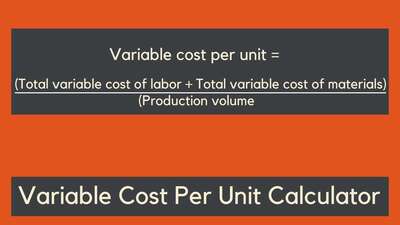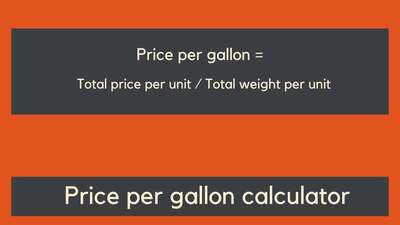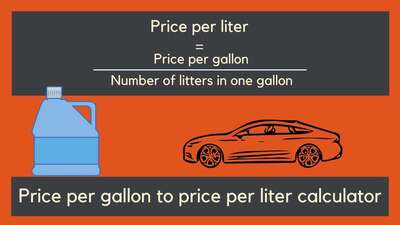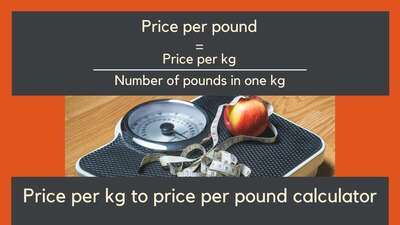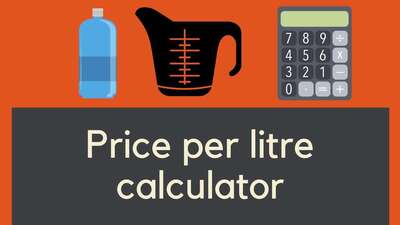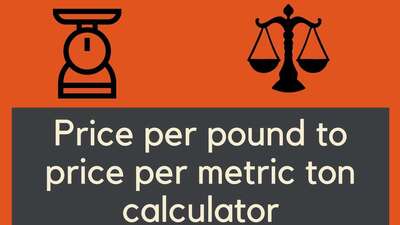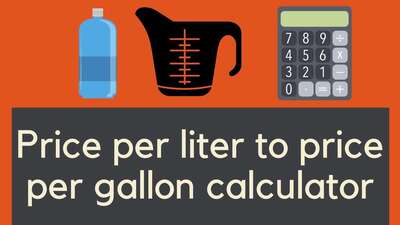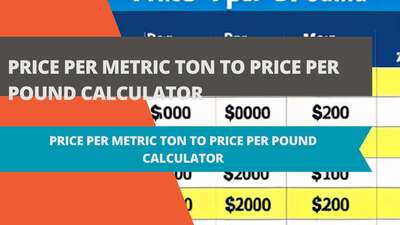Loan Calculator

- What is a Loan Calculator?
- Loan Calculator Formula
- Loan Calculator Examples
- Example 1: Personal Loan
- Example 2: Mortgage
- Explanation of Loan Calculator Results
- What types of loans can a loan calculator be used for?
- Are loan calculators accurate?
- Can loan calculators help me save money?
- The Importance of Informed Borrowing
- Factors to Consider Beyond the Basics
- The Power of Early Repayment
- The Rise of Digital Loan Calculators
- Educating Yourself – The First Step in Borrowing
- FAQs about Loan Calculators
- What is a loan calculator?
- How does a loan calculator work?
- What types of loans can a loan calculator be used for?
- Are loan calculators accurate?
- Can loan calculators help me save money?
- Conclusion
When it comes to taking out a loan, it's important to understand the costs involved. A loan calculator can help you do just that. In this article, we'll explore what a loan calculator is, how to use it, and provide some examples. Additionally, we'll answer some frequently asked questions about loan calculators.
What is a Loan Calculator?
A loan calculator is a tool that allows you to estimate the costs associated with taking out a loan. These costs include the total amount you'll repay, the total interest you'll pay, and the monthly payment you'll be required to make.
Loan calculators are available online and can be used for various types of loans, including mortgages, car loans, and personal loans.
Loan Calculator Formula
The formula used by loan calculators will vary depending on the type of loan you're considering. However, the following formula is commonly used:
Loan Payment = Amount / Discount Factor
Where:
- Amount = Total loan amount
- Discount Factor = [(1 + r)n - 1] / [r(1 + r)n]
- r = Interest rate per period
- n = Total number of periods
Loan Calculator Examples
Let's take a look at some loan calculator examples:
Example 1: Personal Loan
You're considering taking out a personal loan for $10,000 at an interest rate of 5% per year over a term of 3 years. Using the loan calculator formula, we can calculate your monthly payment:
Loan Payment = $10,000 / [(1 + 0.05)36 - 1] / [0.05(1 + 0.05)36]
Your monthly payment would be $299.71.
Example 2: Mortgage
You're considering taking out a mortgage for $300,000 at an interest rate of 3% per year over a term of 30 years. Using the loan calculator formula, we can calculate your monthly payment:
Loan Payment = $300,000 / [(1 + 0.03)360 - 1] / [0.03(1 + 0.03)360]
Your monthly payment would be $1,264.81.
Explanation of Loan Calculator Results
When you use a loan calculator, you'll receive various results. Here's an explanation of what they mean:
- Total Repayment: This is the total amount you'll repay over the term of the loan, including principal and interest.
- Total Interest: This is the total amount of interest you'll pay over the term of the loan.
- Monthly Payment: This is the amount you'll be required to pay each month to repay the loan over the term.
- The total loan amount
- The interest rate
- The loan term
What types of loans can a loan calculator be used for?
A loan calculator can be used for various types of loans, including mortgages, car loans, personal loans, and more.
Are loan calculators accurate?
Loan calculators can provide a good estimate of the costs associated with taking out a loan. However, keep in mind that the actual costs may differ slightly due to factors such as rounding and compounding.
Can loan calculators help me save money?
Yes, loan calculators can help you save money by allowing you to compare different loan options and choose the one with the lowest overall costs.
The Importance of Informed Borrowing
Financial decisions, particularly those concerning borrowing, play a pivotal role in shaping one's future financial landscape. The allure of immediate gratification—be it owning a dream home, driving the latest car model, or pursuing a much-desired higher education—is undoubtedly tempting. However, the underlying costs and commitments often stretch far beyond the present moment.
Making decisions without proper foresight or understanding can lead to unwanted consequences. An uninformed choice can trap you in a loan that, rather than being a helpful financial tool, turns into a constant source of stress, draining both your financial and emotional resources.
It's in these scenarios that tools like loan calculators shine the brightest. They provide a transparent view of the implications of your borrowing choices, ensuring that you step into any financial commitment with clarity and confidence.
Factors to Consider Beyond the Basics
When diving into the world of loans and borrowings, most individuals primarily focus on three key components: the principal amount, the interest rate, and the tenure. These are the basic inputs that almost every loan calculator will ask for. However, a holistic understanding of a loan goes beyond these foundational elements.
Many borrowers overlook ancillary charges that can significantly impact the total loan outlay. Charges such as processing fees, administrative charges, and especially penalties for early repayment can add up, making your loan more expensive than initially anticipated.
Thankfully, in the digital age, many online loan calculators are equipped to factor in these additional costs. By incorporating these charges, they offer users a clearer, more realistic view of their financial obligations, ensuring that there are no unpleasant surprises down the road.
The Power of Early Repayment
When managing loans, borrowers tend to focus on meeting the minimum monthly payment requirements. While this ensures that the loan is serviced regularly, there's a strategic move that's often missed: early repayment. By contributing more than what's mandated each month, you can tap into a powerful strategy to expedite your path to financial freedom.
How does this work? Simply put, any extra payment made goes directly towards reducing the principal amount. As a result, not only is the remaining loan balance lowered, but the cumulative interest accrued over time is also curtailed. In essence, the benefits are two-fold: you'll shorten the duration of the loan and save significantly on interest.
Modern loan calculators often include functionality that allows users to simulate such scenarios. By adjusting the monthly payment figures, one can gain insights into the potential savings in both tenure and overall interest. This visualization can be a strong motivator to commit to early repayments whenever one's financial situation permits.
The Rise of Digital Loan Calculators
The digital revolution, marked by the ubiquity of smartphones and a myriad of apps, has reshaped countless industries — and the domain of financial tools is no exception. Today, digital loan calculators stand out as shining examples of this transformative wave, evolving from simple calculation tools into comprehensive financial assistants.
Leading financial institutions and fintech startups have jumped on this trend, introducing apps equipped with integrated loan calculators. But these aren't your average calculators; they come packed with features. Users can effortlessly save and compare multiple loan scenarios, receive real-time notifications when favorable interest rates emerge, and, in some cases, get direct links to initiate loan applications.
This seamless integration of technology has not just added convenience; it has redefined the loan acquisition journey. Borrowers now have unparalleled transparency at their fingertips, ensuring they're well-equipped to make informed decisions. The future of borrowing, it seems, is not just digital — it's smart and user-centric.
Educating Yourself – The First Step in Borrowing
The journey of borrowing begins not with paperwork or meetings, but with education. Every loan, whether it's for a home, car, or education, carries with it responsibilities and implications. As such, it's paramount to equip oneself with the right knowledge before embarking on this financial endeavor.
Modern tools like loan calculators are indispensable in the learning phase. They demystify complex terms and give tangible shape to abstract figures, aiding in a clearer understanding of repayments and interest implications. However, the educational journey doesn't end here.
Potential borrowers should delve deeper, exploring critical terms such as APR (Annual Percentage Rate), which provides a comprehensive view of the loan's cost, accounting for interest rates and fees. The distinction between fixed and variable rates is another pivotal concept, each with its set of advantages and risks. Moreover, understanding the ramifications of loan defaults will underline the importance of timely repayments and financial discipline.
In the world of finance, knowledge truly is power. The more informed and aware you are, the greater your leverage in negotiations and the more confident you'll feel in making decisions that synchronize seamlessly with your long-term financial aspirations.
FAQs about Loan Calculators
What is a loan calculator?
In today's digital age, understanding financial responsibilities is crucial before making significant commitments. One of the most vital tools in this domain is the loan calculator. But what exactly is a loan calculator?
Definition: A loan calculator is a digital or online tool designed to give potential borrowers insights into the specifics of their prospective loan. It does so by taking into account primary variables associated with a loan— the principal amount, the interest rate, and the duration or term of the loan.
Functionality: By inputting these basic parameters into the calculator, it then uses built-in formulas to determine several outcomes. The most common results include your monthly repayment amount, the total amount payable over the life of the loan, and the total interest you would incur.
Benefits: The power of a loan calculator lies in its ability to offer immediate transparency into the financial implications of a loan. It allows individuals to experiment with different scenarios, such as adjusting the loan term or varying the amount borrowed, to see how these changes would impact repayments. Such insights empower borrowers to make more informed decisions, ensuring that they opt for loans that align with their financial capacity and goals.
In conclusion, a loan calculator is more than just a computational tool—it's a guide that aids individuals in navigating the often complex world of loans, ensuring that they embark on borrowing journeys that are sustainable and aligned with their economic realities.
How does a loan calculator work?
At its core, a loan calculator is a digital tool designed to simplify the complex calculations associated with borrowing. When you're considering taking out a loan, you're presented with multiple variables - the principal amount, the interest rate, and the duration of the loan. Computing the actual monthly payments and the overall interest can be challenging. This is where the loan calculator steps in.
Basic Mechanics: Loan calculators operate based on a specific formula. This formula varies slightly depending on the type of loan (e.g., simple interest, compound interest) but generally factors in the principal amount, the interest rate, and the loan term. By processing these variables, the calculator outputs the monthly payment amount and the total interest you would pay over the life of the loan.
Advantages: The primary benefit of using a loan calculator is its ability to offer instant clarity. Without having to delve into manual calculations, you can quickly gauge the affordability of a loan, compare different loan scenarios, and make informed decisions about your borrowing needs.
Conclusion: In essence, loan calculators demystify the borrowing process, providing borrowers with a clearer understanding of their financial commitments. So, before committing to any loan agreement, it's advisable to utilize these tools to ensure you're making a decision that aligns with your financial well-being.
What types of loans can a loan calculator be used for?
A loan calculator can be used for various types of loans, including mortgages, car loans, personal loans, and more.
Are loan calculators accurate?
Loan calculators can provide a good estimate of the costs associated with taking out a loan. However, keep in mind that the actual costs may differ slightly due to factors such as rounding and compounding.
Can loan calculators help me save money?
Loan calculators are more than just tools for estimating monthly payments; they are vital instruments for financial planning. When you input various loan parameters into a calculator, it generates a comprehensive breakdown of the costs associated with your loan. This transparency can offer insights into:
- Interest Over Time: By understanding how much interest accumulates over the life of the loan, you can determine if a particular loan is financially viable.
- Comparison of Different Loan Scenarios: Adjusting loan amounts, interest rates, or tenure allows you to compare different scenarios side-by-side. This can aid in choosing a loan structure that minimizes costs.
- Impact of Extra Payments: Some calculators let you factor in additional payments. By doing so, you can see the long-term savings when you pay more than the minimum required amount.
In essence, by utilizing a loan calculator, you can make informed decisions that align with your financial capabilities, ensuring that you're not just borrowing wisely, but also saving in the long run.
Conclusion
Loan calculators are a useful tool for anyone considering taking out a loan. By using a loan calculator, you can estimate the costs associated with the loan and determine whether it's the right option for you. Additionally, loan calculators can help you compare different loan options and choose the one that will save you the most money in the long run.





![Car Loan Calculator: Definition, Formula, Examples, and FAQs [2023 Guide]](/images/page/400/car-loan-calculator-13.jpg)










